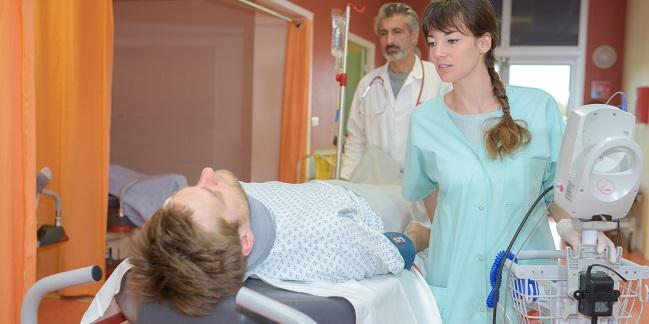No Negative Impact With Transfer After Endovascular Thrombectomy: DEFUSE 3
Patients with large-vessel occlusion strokes who had to be transferred to a thrombectomy-capable site still benefited.

For patients with large-vessel occlusion (LVO) stroke treated within 6 to 16 hours of symptom onset who meet DEFUSE 3 inclusion criteria, the need for transfer to another hospital for endovascular thrombectomy does not appear to have a negative impact on treatment effect or functional outcomes, according to a new analysis of the trial’s data.
“Many patients with acute stroke do not present directly to endovascular capable centers,” lead author Amrou Sarraj, MD (University of Texas Health Science Center at Houston), told TCTMD in an email.
“DEFUSE 3 demonstrated the benefit of thrombectomy in the late time window, and many of those who did not present directly needed to be transferred,” he continued. “So, it was important for us to evaluate the transferred patient outcomes with thrombectomy, comparing their functional outcomes to patients presenting directly, and especially [to] assess if the thrombectomy treatment effect was maintained.” This analysis was particularly needed, Sarraj explained, because “prior analyses of early-window trials showed worse outcomes in patients who were transferred.”
The paper was recently published online ahead of print in the JAMA Neurology.
As previously reported by TCTMD, DEFUSE 3 was a prospective, randomized, multicenter, blinded-endpoint trial. The study, conducted at 38 stroke centers in the United States between May 2016 and May 2017, enrolled 182 patients with LVO stroke of the anterior circulation who were treated within 6 to 16 hours from the last time they were known to be well and followed them for 90 days. The main trial results demonstrated that, in these selected patients, endovascular thrombectomy plus standard medical therapy yielded better outcomes than standard medical therapy alone. Prior to DEFUSE 3, the benefits of endovascular therapy were believed to be largely limited to patients treated within 6 hours of symptom onset.
For this subanalysis, which was not prespecified, Sarraj et al stratified patients based on whether they had presented directly to the study site (34%) or were transferred from a primary center (66%). In the transfer patients, median age was 71 years and 57% were female, whereas in the direct-presentation group, median age was 70 years and 37% were female. Not surprisingly, transfer patients had longer median times from last known period of wellness to study-site arrival (9.43 vs 9 hours) but had more favorable collateral profiles based on hypoperfusion intensity ratio (median of 0.35 vs 0.42 in the direct group; P = 0.05).
But importantly, the primary outcome, an ordinal analysis of the distribution of scores on 90-day modified Rankin Scale (mRS) score, was no different between groups. Nor were there any differences in good functional outcome, defined as 90-day mRS 0-2. No differences between the two groups were seen with respect to mortality or symptomatic intracranial hemorrhage.
Among the 92 patients who underwent thrombectomy, reperfusion rates also were similar, with 76% achieving a thrombolysis in cerebral infarction (TICI) score of 2b/3 (indicating complete reperfusion) in both groups.
One surprise for the authors was the minimal disparity in arrival times at the endovascular therapy-capable hospital: scarcely more than half an hour’s difference between the two groups.
“This may represent the reason for the similar functional outcomes in transferred patients,” Sarraj said.
Make Endovascular Treatment Accessible
Commenting on the study for TCTMD, Laura K. Stein, MD (Icahn School of Medicine at Mount Sinai, New York, NY), said she was unsurprised by the findings. “These were trial conditions, with patients well-selected based on penumbral mismatch and centers [that had] experienced treating physicians and streamlined systems of care. Interestingly, the patients transferred had slightly better collaterals, [which] could have allowed for a slower progression and good outcome despite longer time to treatment with transfer,” Stein noted.
“These findings support the mandate to help every patient with emergent LVO obtain access to endovascular therapy, regardless of presenting location and resource limitations,” she continued. “We must continue to strive to properly select patients with penumbral mismatch, and those with higher collateral scores may be able to withstand longer time to treatment if transfer is required. There is no one-size-fits-all solution for emergent LVO treatment, and certain centers in this country may need to continue to rely on transfer protocols.”
Sources
Sarraj A, Mlynash M, Savitz SI, et al. Outcomes of thrombectomy in transferred patients with ischemic stroke in the late window: A subanalysis from the DEFUSE 3 trial. JAMA Neurol. 2019;Epub ahead of print.
Disclosures
- Sarraj reports being the site principal investigator for DEFUSE 3.
- Pujara and Stein report no relevant conflicts of interest.
Comments